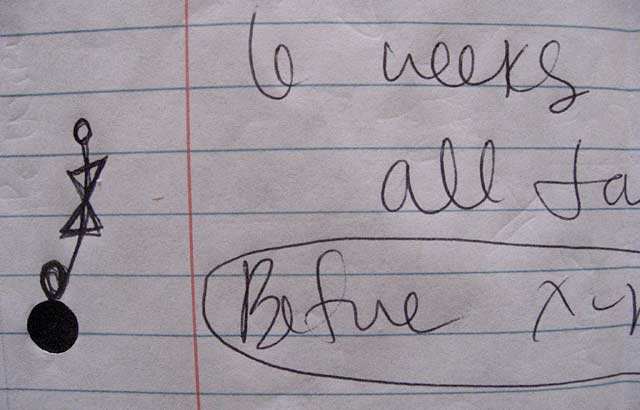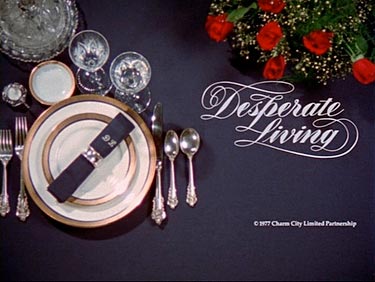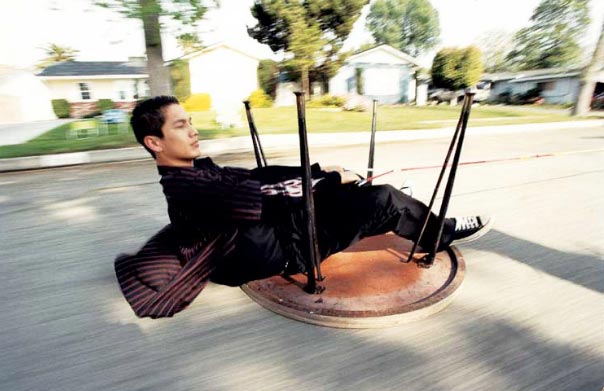I even tried not to think
Eric Rohmer, the French critic and filmmaker who was one of the founding figures of the French New Wave and the director of more than 50 films, including the Oscar-nominated “My Night at Maud’s,” died on Monday in Paris. He was 89.
{ NY Times | Continue reading }
“The Moral Tales” and the cycles that followed — the six “Comedies and Proverbs” in the 1980s and the “Tales of the Four Seasons” in the 1990s — are the essential Rohmer. Other filmmakers manufacture sequels or burrow repeatedly into genres. His cycles are unusual in the way that they arrange self-contained narratives around themes, ideas and suggestive anecdotes. They don’t make arguments so much as offer slightly different views of similar problems. What happens when we fall in or out of love? How do accidental occurrences impinge on our plans and ambitions? What happens next?
These are not necessarily timeless questions, at least not in the way that fundamental problems of philosophy are. But they are always part of life, and framing them — in language and in pictures, the constituent elements of Mr. Rohmer’s movies (he rarely used music) — is what art does. Classicism is an approach that takes up these problems as they occur, without worrying too much about their contemporary relevance or their permanence.
video { Rohmer’s La Collectionneuse, 1967 | See also: Ma nuit chez Maud , 1969 }
Every day, the same, again
‘Vampire Leader’ sentenced for threatening to torture, dismember judge.
The couple who share their bed with a deer.
Boy, 12, robs store with a toy gun.
New airport scanners break child porn laws.
Detectives linked him to a rash of unusual burglaries at dental clinics and dental laboratories in Seattle. Prosecutors allege that Carlson would steal gold fillings and raw gold used to make fillings and turn around and sell it at a tidy profit.
Dolphins have been declared the world’s second most intelligent creatures after humans, with scientists suggesting they are so bright that they should be treated as “non-human persons”.
Antisocial fish are more likely to invade new environments.
The recession was less calamitous than many feared. Its aftermath will be more dangerous than many expect. Plus: America slides deeper into depression as Wall Street revels.
The Federal Reserve earned $45 billion in 2009. Essentially all that $45 billion was earned by one profit center, the New York Fed.
Major U.S. banks paid out $145 billion in compensation in 2009, up 18% from 2008.
In May 2004, I was hired for an unusual job: The U.S. State Department contracted DynCorp International, a private military company, to build Liberia’s army. I was tapped as an architect of this new force. Today the stage is Afghanistan. The lessons of Liberia may help.
As we all know, time flies when you’re having fun. But according to a study in the journal Psychological Science, the reverse is just as true: we enjoy ourselves more when we think time passes quickly.
Morbid warnings on cigarette packs could encourage some people to smoke. Related: Weight gain from quitting smoking linked to diabetes.
Scientists look to tobacco leaves for biofuel.
Computer algorithm identifies authentic Van Gogh. Previously: 902 letters from and to Van Gogh.
The most important medical breakthroughs of the 2000s. Plus: The top 10 stories of the last 4.5 billion years.
 Can sex offenders have children? Why have I never seen a female gas station attendant? Unanswered Questions From 2009.
Can sex offenders have children? Why have I never seen a female gas station attendant? Unanswered Questions From 2009.
2010: a prediction. We won’t cure cancer or AIDS or poverty. We won’t win the war on drugs. On terror. On adult illiteracy. On unemployment. We won’t win. The year of more of the same. [More] Related: The 10 worst predictions for 2009 and the decade in logos.
2010 predictions for Google and Apple.
Apple vs. Google. Who’s going to win the great mobile-phone war? Related: Part of my main issue with Android, and this applies slightly less to HTC Sense UI handsets, is that there’s practically no human emotion with Google when it comes to technology. Plus: Waterproof case and integrated waterproof headphone system lets you enjoy your music on your iPod shuffle while you swim.
Google threatened to pull out of its operations in China after it said it had uncovered a massive cyber attack on its computers that originated there. And: Google’s threat echoed everywhere, except China.
What my parents did not realize was that they could have nearly eliminated those charges if they had set up their (in this case) iPhone and BlackBerry to take advantage of mobile Internet calling services: That $1.29-a-minute charge would have gone down to a much more reasonable 2.4 cents a minute (or nothing at all if they were on a Wi-Fi network).
Courtney Love unveils her new flower tattoos.
Examine Netflix rental patterns, neighborhood by neighborhood, in a dozen cities. Plus: The weirdest zip codes on the New York Times Netflix map.
The year of the paywall. Newspapers will try to persuade online readers to pay in 2010.
Mag+, a concept video on the future of digital magazines.
The translation gap: Why more foreign writers aren’t published in America.
What the Burj Kahlifa—the tallest building in the world—owes to Frank Lloyd Wright.
 The truly original thing about ”Rapper’s Delight.”
The truly original thing about ”Rapper’s Delight.”
Steroids make you big and strong. Do you know what else happens? A firsthand account from a man who will never do it again.
Here’s the deal: Not only does the G-spot exist, it is very easily found.
New ‘lifelike’ sex doll is still weird, not lifelike.
Using children’s stuffed animals in an adult boutique campaign? Maybe not the right way to go.
Artist’s prize-winning work is destroyed. (It’s what he wanted.)
Surface area of the Earth [pie chart].
People playing chess on roller coasters. [pics]
One year in 120 seconds. [video]
Start walking, build up momentum…
Self portrait w/ self portrait.
Faces. Related: Paper Surgery.
Slap me five, that’s the place we’ve arrived
People rarely say what they mean when targeting a goal because the indirect route is usually more efficient in the context of working within a collective where others have competing goals, and so selectively emphasizing process or results to the act or the rule, allows a great deal of rationalization.
Freedom on the television

In the latest edition of Mind Matters, Susan Whitfield-Gabrieli and John Gabrieli of MIT outline some interesting new research on the link between resting state activity - the performance of the brain when it’s lying still in a brain scanner, doing nothing but daydreaming - and general intelligence.
It turns out that cultivating an active idle mind, or teaching yourself how to daydream effectively, might actually encourage the sort of long-range neural connections that make us smart. At the very least, it’s time we stop discouraging kids from staring out the classroom window, because mind wandering isn’t a waste of time
photo { Christophe Kutner, Road trip 2 }
Everybody take it to the top, we’re gonna stomp, all night
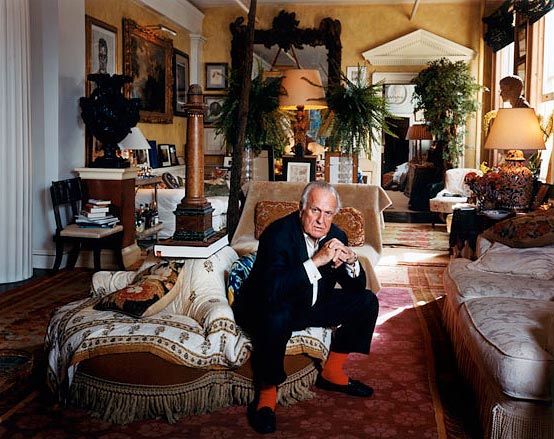
{ John Richardson photographed by Mark Heithoff }
It won’t take you long to learn the new smile
For once, social scientists have discovered a flaw in the human psyche that will not be tedious to correct. You may not even need a support group. You could try on your own by starting with this simple New Year’s resolution: Have fun … now!
Then you just need the strength to cash in your gift certificates, drink that special bottle of wine, redeem your frequent flier miles and take that vacation you always promised yourself. If your resolve weakens, do not succumb to guilt or shame. Acknowledge what you are: a recovering procrastinator of pleasure.
It sounds odd, but this is actually a widespread form of procrastination — just ask the airlines and other marketers who save billions of dollars annually from gift certificates that expire unredeemed. (…)
But it has taken awhile for psychologists and behavioral economists to analyze this condition. Now they have begun to explore the strange impulse to put off until tomorrow what could be enjoyed today.
Mirror pool mirrors, the lonely place
Although our bodies appear largely symmetrical on the outside, the way our brains are organised and wired is rather more lop-sided. This is obvious to us in relation to handedness, whereby the brain is better at controlling one hand than the other. The idea that, for many of us, the left-hemisphere is dominant for language is also widely known.
However, functional asymmetry between the brain hemispheres also affects our behaviour in more subtle ways that are still being explored. The latest example of this comes from Japan where Matia Okubo has shown that right-handers have a preference for sitting to the right of the cinema screen, but only when they are motivated to watch the film.
The finding is consistent with the idea that in right-handers, the right-hemisphere is dominant for processing visual and emotional input. By sitting to the right of the screen, the film is predominantly processed by the right-hemisphere and the suggestion is that, without necessarily realising it, right-handers are choosing to sit in an optimal position for their brain to digest the movie.
I was happy in the haze of a drunken hour but heaven knows I’m miserable now
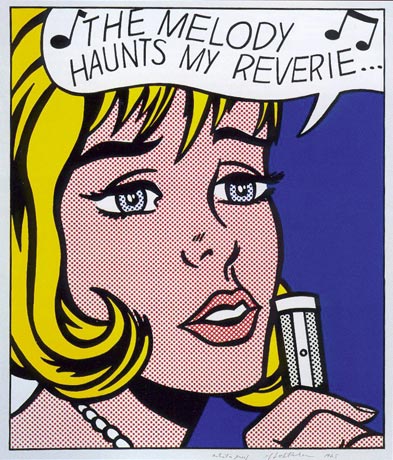
Sometimes songs get ’stuck in our head’. In German, this experience is known as having an ‘earworm’ and a new study shortly to be published in the British Journal of Psychology surveyed the typical features of this common phenomenon.
What particularly struck me was that “the length of both the earworm and the earworm experience frequently exceed standard estimates of auditory memory capacity”.
What is meant by auditory memory here is our ability to consciously remember a short piece of sound or to ‘repeat something back to ourselves’ - often called the ‘phonological loop’ in a popular model of working memory.
This tells us that ‘earworms’ are probably not something getting stuck in our very short-term memory but the reason why such tunes keeping buzzing around our conscious mind is still a mystery.
artwork { Roy Lichtenstein, The Melody Haunts My Reverie, 1965 }
Don’t say what you mean you might spoil your face
Why are people so blissfully ignorant of certain aspects of their personalities?
Take an everyday example: there are some infuriating people who are always late for appointments. A few of these people explain it by saying they are ‘laid-back’, while others seem unaware that they’re always late.
For laid-back people, their lateness is a part of their personality, they are aware of it and presumably not worried about appearing unconscientious. For the unaware it’s almost as if they don’t realise they’re always late. How is that possible?
It’s probably because they’ve never noticed or paid attention to the fact that they are always late so they never learn to think of themselves as lacking conscientiousness. Or so suggests a psychological theory describing how we think about ourselves called self-schema theory.
This theory says that we have developed ’schemas’, like internal maps of our personalities, which we use to understand and explain our current and future behaviour to ourselves, e.g. I’m always on time for meetings so I’m a conscientious person.
However schema theory also suggests that these maps have uncharted areas, leaving people with certain blind spots in their self-knowledge.
And the sound of the tires in the snow

Can a person freeze to death? (…) Death strikes long before the body actually freezes.
Yet our bodies are pretty hardy, as we have two built-in mechanisms to protect us from the cold.
As soon as that bitter air hits your face, your body will try to insulate itself by moving blood away from the skin and outer extremities, such as fingers and toes, and toward its core. This process is called vasoconstriction, and it helps limit the amount of heat you lose to the environment, explained John Castellani of the U.S. Army Research Institute of Environmental Medicine.
The second response from your body is shivering. People may experience a little shivering when they’re skin temperatures starts to fall, but major shivering usually doesn’t occur unless your core body temperatures drops, Castellani said.
And yet, and yet, step by step, without a word between us, bit by bit
Ferdinand: Why do you look so sad?
Marianne: Because you speak to me in words and I look at you with feelings.
Ferdinand: I can never have a real conversation with you. You never have ideas, only feelings.
Marianne: That’s not true. There are ideas in feelings.
Just pull out an old Gusteau recipe, something we haven’t made in a while
For someone who remembers the old days, the food is the most startling thing about modern England. English food used to be deservedly famous for its awfulness–greasy fish and chips, gelatinous pork pies, and dishwater coffee. Now [in 1998] it is not only easy to do much better, but traditionally terrible English meals have even become hard to find. What happened?
Maybe the first question is how English cooking got to be so bad in the first place. A good guess is that the country’s early industrialization and urbanization was the culprit. Millions of people moved rapidly off the land and away from access to traditional ingredients. Worse, they did so at a time when the technology of urban food supply was still primitive: Victorian London already had well over a million people, but most of its food came in by horse-drawn barge. And so ordinary people, and even the middle classes, were forced into a cuisine based on canned goods (mushy peas!), preserved meats (hence those pies), and root vegetables that didn’t need refrigeration (e.g. potatoes, which explain the chips).
But why did the food stay so bad after refrigerated railroad cars and ships, frozen foods (better than canned, anyway), and eventually air-freight deliveries of fresh fish and vegetables had become available? Now we’re talking about economics–and about the limits of conventional economic theory. For the answer is surely that by the time it became possible for urban Britons to eat decently, they no longer knew the difference. The appreciation of good food is, quite literally, an acquired taste–but because your typical Englishman, circa, say, 1975, had never had a really good meal, he didn’t demand one. And because consumers didn’t demand good food, they didn’t get it. Even then there were surely some people who would have liked better, just not enough to provide a critical mass.
And then things changed. Partly this may have been the result of immigration. (Although earlier waves of immigrants simply adapted to English standards–I remember visiting one fairly expensive London Italian restaurant in 1983 that advised diners to call in advance if they wanted their pasta freshly cooked.) Growing affluence and the overseas vacations it made possible may have been more important–how can you keep them eating bangers once they’ve had foie gras? But at a certain point the process became self-reinforcing: Enough people knew what good food tasted like that stores and restaurants began providing it–and that allowed even more people to acquire civilized taste buds.
So what does all this have to do with economics? Well, the whole point of a market system is supposed to be that it serves consumers, providing us with what we want and thereby maximizing our collective welfare. But the history of English food suggests that even on so basic a matter as eating, a free-market economy can get trapped for an extended period in a bad equilibrium in which good things are not demanded because they have never been supplied, and are not supplied because not enough people demand them.
{ Paul Krugman, Supply, demand, and English food, 1998 | more }
We all look so perfect, as we all fall down

The Great Barrier Reef is the largest living structure on Earth. It might also represent the most prolific cradle for new types of animals on the planet, according to new research. (…) In fact, of the 6,615 seabed invertebrates surveyed in the so-called Paleobiology Database, 1,426 evolved in a reef ecosystem. And the result is not just an artifact of reef and shallow-water fossils being relatively more studied. (…)
According to some mathematical estimates, 99.9 percent of all species that have ever existed are now extinct. As it stands, estimates of the number of species on Earth at present range from five million to as many as 100 million, with science having identified only two million members of the biodiversity extant today. That means literally billions of species have come and gone in the 4.5 billion years Earth has existed.
New research will be needed to determine exactly why reefs are such efficient cradles for new life-forms. But the threats faced by coral today—from rising ocean acidity to agricultural runoff and rampant disease—do not bode well for marine biodiversity in the near future.
photo { Josh Brand }
It used to be the dust that would lay here
What’s driving TVs to go wireless?
For many years now, there’s been a trend in the TV world toward thin, flat-screen displays. A few years ago, when a plasma television weighed 250 pounds and was 4 or 5 inches thick, it was really challenging to call that a truly “hang on the wall” TV. But now, modern ultra-slim TVs are less than an inch thick and weigh only 40 or 50 pounds. It’s at the point where it’s just like hanging a picture on the wall–put a few hooks up, hang it and you’re done. The problem is now you’ve got this beautiful TV hanging up above the fireplace and all these ugly wires dangling over the mantle! We need some way to get rid of those wires, and consumers are looking for something easier than tearing up the wall to route cables. Wireless is the perfect solution.








